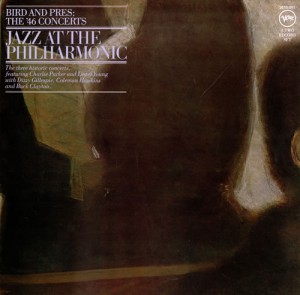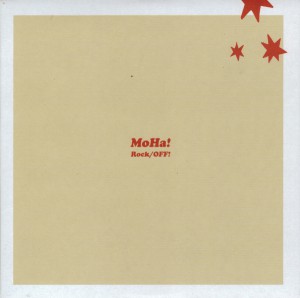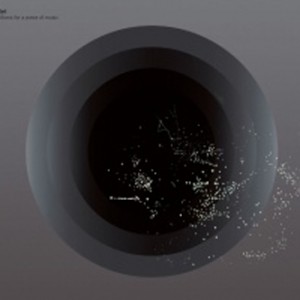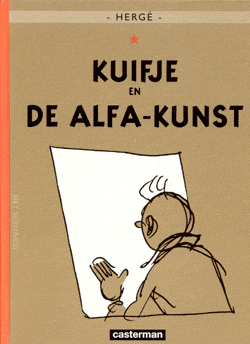This text is the rough version of a live-blog written during the conference Imagine an Audience at the Piet Zwart Institute in Rotterdam: http://pzwart.wdka.nl/communication-in-a-digital-age/2011/01/17/conference-imagine-an-audience/. An edited and cleaned-up version will be published in due time on the website of the Piet Zwart. The text is written en conceived of as a live report – though it was not published immediately.
At noon, on monday the 31st of January 20011 Florian Cramer starts off the conference Imagine an Audience. He states the general idea of the conference: looking at cinema in a post-television and post-cinema world. What has changed for cinema in a world in which television and cinema are not anymore the only and not even anymore the most important ways of distribution for audiovisual content? Cinema has to imagine its own audience, how is it doing that? During the conference, he says, we will speak about micro-cinema, about using Youtube for cinema, about filmmaking for art spaces and the future of low budget filmmaking. The idea is to look at what the future of filmmaking is in an artistic sense – and not speak about funding, money and economy too much, as economist can do this much better.
Simon Pummel, who co-organized the conference with Florian Cramer relates a story about bicycles, as a second introduction. With the ‘advent’ of the bicycle the space in which people traveled grew in size, and they came into contact with more different people. As a result the general genetic health of the people went up. The question is would what was true for genes, also be true for memes, for cultural ideas, for cinema? Is such a Darwinian perspective valuable or true for the field of filmmaking?
Microcinema I
The first panel is about micro-cinemas and alternative ways of distribution for cinema . The first short presentation is by Paolo Davanza who tells his story of working with cinema, mainly in the context of activist filmmaking at the Echo Park Film Center in Los Angeles. It now has a space which can fit up to 200 people, and he runs it together with Lisa Marr. It shows films, organizes also a variety of cinema-events, and importantly, they offer a large number of workshops and classes in filmmaking for a variety of groups. The center is located in an area with a lot of cinema history, as many of the early silent movies were shot around the corner. They are into analogue and handmade filmmaking, working in the honourable tradition of avant-garde and activist film: from scratching celluloid to making film for and with marginalized people. They do this in the context of a ‘film’ world which is increasingly focussed on digital film. They also have a bus – the filmmobile, (filmmobile.org), which is a traveling filmschool and traveling cinema – actually going back to another honourable tradition of traveling cinema’s. They try to do all this in an ecological sustainable way. Theirs is in many sense a classic ‘alternative’ film center, dedicated to all forms of alternative film culture.
Microcinema II
The next presentation is by members of the Kino-climates group, a network of alternative cinema, who have their fourth meeting at the IFFR 2011. Their goals is to create a platform for alternative cinema, and it is still a work in progress. They start from the assumption (fact) that more and more films are made, but there are less and less permanent venues for showing film. Cinema functions in three seperate distribution circuits: multiplexes, art house and the festivals, whereas as in reality there are many more alternative spaces and alternative modes of showing film which are in operation. The Kino-climates network would like to make this network more visible, and they hope that they can put pressure on festivals to make sure that the life cycle of a film shown at a festival does not end at the festival, as well as putting pressure to distributors of film. In a sense they hope to set up a ‘voice’ for all the independent cinema venues, many of which are quite small.
The cinema venues that are part of the network, all have a social space, a cafe – (the question is how special that is, I don’t think that I have ever been in a cinema that lacked a cafe). They stress the importance of watching film as a social event, and they hope to enable the audience to discover a wider array of cinema. Therefore they put effort into contextualizing film. (Meanwhile they show pictures of different cinemas, one of them I recognize as the cinema of the Smart Project Space in Amsterdam, a center for contemporary (visual) arts, I know that cinema personally as a concert space).
Everything they tell sounds like a sympathetic effort to bundle the activities of various smaller, alternative cinema’s which show both features film and probably some avant-garde stuff and which function as social spaces for people who are into cinema (mostly artists and art students I suspect). The network mostly sounds organizational, and hardly editorial. In their presentation I do not hear of any specific idea or perspective on the future of cinema, not specific ideas on programming, and hardly how such small cinema venues relate to our viewing habits – though I suspect they have very defined ideas about this. I would have rather heard them speak about such things.
The question remains if these places – how nice and important they might be – do not cater to a very specific audience. I have nothing against this, but it seems as if they assume they operate in a culture of ‘cinema’s’, they talk about festivals and multiplexes and cinema venues, and nobody on this panel until now mentions the various ways in which the public actually gets their content to different home and mobile screens, nobody seems to mention any real change in film culture. Probably for film buffs nothing has changed, they still go to cinemas and revere that experience. And they are right. But that’s not where cinema at large ‘lives’ today. I hardly go to a cinema, yet I see quite a few avant-garde movies, most of which come to me through digital wizardry of some sort. I have hardly seen any art house stuff lately, and no blockbusters at all… So the question according to me is – how to programme a cinema venue in a way that it makes sense in contemporary film culture, or contemporary viewing habits? In a way that it becomes a valuable experience (for the public), or simply important for the artistic ‘health’ of cinema culture?
True, in the last part of their totally improvised presentation they do talk about the importance of programming.
Vassily Bourkas of the Thessaloniki film festival stresses that in Eastern and South-eastern Europe such venues as they exist in Western Europe do not exist – except a festival. He stresses that it is very important for these (often political more instable) countries to have a network like Kino-climates. For him Kino-climates is valuable, and he stresses that it is important to have a variety of voices in any type of platform, so it will not become just another ‘big’ platform.
Microcinema III
The third presentation is by Marvin Espina, who works in Malaysia, Vietnam and the Philippines and who is involved in the long running human rights film festival Cinema Veritas. He gives an overview of micro-cinema initiatives in South East Asia. (So we cover Europe, North America and South East Asia). He shows how the ‘education’ of filmmakers in this area started in the shops brimful of pirated dvds. After 2000 filmmaking increased, thanks to DV + pirated software, and pirated dvds. This is an economical issue. Cinema culture in SE Asia – both as grassroots and experimental cinema and cinema at large – is a digital thing. But where are these films shown? There is a lack of institutional support, outdated laws on video, censorship, the predominance of Hollywood fare in multiplexes. The general popularity of social networking and media sharing sites has helped film communities to flourish. These are factors that lead to a felt need for alternative venues for cinema.
Galleries like Mag:net Katipunan (later a bar) have started to show films – monday to friday – but show also cinema- and video installations. This caused a fuss, and in the case of Mag:net Katipunan lead to a police raid in 2007. Other initiatives learned from that experience, like Mogwai, Cubao X in the Philippines, which is a bar with a theater. Because they are both bar, theater and cinema they are left alone by the government. Other cinema spaces are basically run in the living room of an artist – sometimes also under harassment of the government. Future Shorts Vietnam is a festival which is also functioning mostly underground, and under scrutiny. It used different venues – often places of ex-pats, who run less risks. Because of the censorship in Vietnam it is difficult to show film. Therefore YxineFF runs as an online festival. It has become quite popular, an premieres films online.
Peer-to-peer distribution plays a role, people share cinema amongst themselves, and organize sometimes a screening with the maker present. Most of the (alternative) cinema-culture in South East Asia revolves around digital filmmaking and digital distribution. Discussion and the liveliness of cinema culture is largely played out through online means. Censorship is avoided by uploading online, instead of showing film in a public venue.
More on seaconference.wordpress.comand criticine.com.
This presentation for me was the healthy antidote to the talks by Kino-climate-network members, who might have had too much an IFFR-audience in mind – instead of the actually mixed audience of new media artists, visual artists and filmmakers. At least now the real situation of film use is acknowledged.
Micro-cinema IV, discussion
Florian Cramer asks an immediate question concerning the disappearance of the large Philippine film industry, which existed until the eighties. Did these directors go into television, or could the Philippines actually have had a shift to microcinema at a much earlier stage? The answer by Espina is that many filmmakers from that era shifted to art cinema, but not necessarily as microcinema, as some of these directors received European grants to produce their work. At the moment there is some financial funding for cinema in the Philippines, but not yet in a way as it exists in Europe.
Simon Pummell asks if there is a power in synchronizing events for alternative cinema, to combat Hollywood.
The answer by Kino-climates to Pummell’s question is that the urgency is to get together (around a film) and put the importance of screening a film in a public cinema at the center. Katia Rossini of Cinema Nova in Brussels stresses that the experience of watching film runs the risk nowadays of becoming ephemeral, taking place at home, instead of at a public cinema.
Pummell indeed meant to raise a more PR-related issue, like deciding to show certain alternative, art or avant-garde film at different venues at the same time to capitalize on the attention of the public, as he rephrases his question. Kino-climates would like to criticize such an approach, as it is basically creating hype after hype.
Paolo Davanza tunes in here, also emphasizing the importance – for film culture – to watch film together. Lisa Marr reacts as well, saying that for her it is about the process, about the moment, and not about getting a movie into the canon. (Pummell mentioned the word ‘canon’ in his question).
Florian Cramer raises the question if it is not more important that the venues that are gathered under the banner of Kino-climates actually combine watching cinema with making and producing film, and thus bring filmmaking closer to people?
Vassily Bourkas agrees with that, but he is adamant that what is most important for him is showing film – not about getting together in a social way. So he agrees with Simon Pummell that synchronicity is important. There is an urgency to show movies, and also for films that are socially important.
Florian Cramer then challenges the panel to reflect on the hidden conflict in the panel: the European and Americans on the panel are into film as analogue film, and hope to preserve some of the old cinema culture, whereas the Asian experience totally revolves around digital film. Davanza nuances that: they actually mostly work with digital means in their workshop, they revere that power just as much as they revere the old film culture.
Microcinema V, discussion with audience
Then it’s up to questions from the audience. Which starts with questions about urban development and culture. Lisa Marr relates how they operate as itinerant cinema, PR through Twitter, no permissions asked, using a generator for electricity, show the movie in a temporary space, have an drink and go. Mostly they’ve not had problems and they’ve encountered an enthusiastic audience. That’s important for neighborhoods.
Someone from Jakarta relates the situation of independent filmmaking in Indonesia. She quotes also “we’re living in the heaven of piracyâ€, the film culture fares well thanks to piracy – aquiring rights is too expensive. They also translate ‘good films’ in Bahasia Indonesian, of course only for educational purposes. Mervin Espina states the Indonesia actually is the model for South East Asian cinema culture.
Renee Turner asks how can you build a community which is sustainable? – with which she means cultural sustainability. Bourikas responds that there should not be too much complicity, alternative spaces should not become venues that show mainly the stuff that is produced there. He argues as a curator who emphasizes the importance of independent programming. Also the idealism involved in keeping the spaces running is mentioned.
Florian Cramer mentions that film culture now is either 3D multiplexes, micro-cinemas, or the homescreen. He wonders if we are moving into a situation in which films are made especially for one of these spaces? Josephine Bosma responds by saying that Florian Cramer probably paints too bleak a picture, mentioning that there are many more modalities, like beamers for mobile phones or the Palm Top Theater shown currently at V2_. She wonders also about how to sustain a culture, and the importance of educating an audience. Florian takes the criticism to heart, saying that the line between filmmaker and audience is becoming blurry and that this is what is really interesting.
At these questions – which according to me address the real interesting issues – the panel falls pretty much silent. They go back to the importance of venues, mention the issue of formats (cinemas which are now only equipped to run dvds), and how the cinema as a venue is changing. A venue could become with its editorial line something like a magazine, because with programming you set out a discourse. (I would say, yes, that is what a good cinema should be doing. But it is something which for instance the Filmmuseum in Amsterdam is doing, as well as many small cinemas).
Pummell does follow Cramer up by asking if the panel would go for cross- or transmedia publication of films, a question which also goes into the question: on which screen will you be showing the film, on what screen does the audience actually see the film? Answer: it’s not an issue yet for Kino-climates.
Luke Fowler then raises his hand, and says that it is ironic that we’re in an arts school discussing these things. He says: we as a generation grown up with cinema as celluloid, want to pass this on to the next generation. But we should not force this unto the new generation, they might not want it. In Scotland – where he is from there was no alternative cinema. He says: we should not create a false distinction between filmmakers and artists making film. There are many more art schools than film schools, and film has such a big presence in the art world, that this should not be ignored as part of cinema culture.
Bourikas responds, and argues that the contemporary arts circuit in his opinion is actually quite different – culturally – from the film circuit. He is interested in preserving the culture of cinema-watching in a cinema.
This being the topic for the next day, the discussion is wrapped up. There’s a break.
15.00 – 17.30
No budget video on the Internet is the focus for the second part of the afternoon. On purpose the ‘internet’-thing is presented in isolation to the ‘cinema-thing’. This panel wants to show what the Internet has to offer for filmmakers, but in the first place it wants to get rid of the myth that if you’re a film maker on the internet you’re low budget. The panel starts with Skype-talks with Bregtje van der Haak and Tommy Pallotta.
Originally Igor Vamos of The Yes Men would have been speaking about his experiences with their film. Their first film – which was quite a big success internationally – managed to enter the independent cinema circuit and made the tour through the cinema’s in the USA. This turned out to mean touring with the film, because cinema’s only wanted the film to be shown if the makers were present. Such is the dire state of culture in the USA. They lost money on it. Their second movie was co-produced by Arte, which meant signing a 100 page contract in French, an spending money on lawyers to understand the contract and finally signing a contract for a much smaller budget. (Was the problem that, as one of the Yes Men speaks French very well, they actually read the contract?) For the third movie they decided to offer it free for download on the Internet. Now the Yes Men are quite famous, what do these examples imply for an independent filmmaker who is not so famous…? Their experiences were for Florian Cramer one of the key reasons to organize this conference.
Tommy Pallotta
Tommy Pallotta speaks from Skype, because he has to baby-sit his kid, who we can hear in the background. His experiences as a filmmaker started before the digital revolution – and he decided afterwards to never make a movie like that again. He went into computer animation, and made Waking Life. At a certain point he found out that people knew his movie not from cinemas but from Bittorrent. People all around the world got to see his movie. The same became true for A Scanner Darkly. He tells about a screening of that movie in South Korea, were everybody in the audience had already seen the movie, downloaded through torrents. The same sort of things happend for American Prince – much more a low budget movie. As a filmmaker he’s not worried about this at all, although there is no business model to it, people get to see his movie.
The talk, through a question by Simon Pummell then goes to the idea of transmedia, and the question if a certain content needs a certain form, or can be translated amongst forms. For Pallotta a specific content needs a specific form.
Florian Cramer again asks the question if we are moving to a two model kind of cinema, either blockbusters for multiplexes, or low budget for the Internet. Pallotta agrees, sees it as a capitalist problem: the riches get richer, the poor get poorer – but also sees the current systems as very dynamic, and cites the influence of computergames and mobile media. He is also positive about the possibilities to find a middle ground, and find ways of getting people to see your stuff.
A question from the audience: would you allow your work to be remixed? The answer: yes. He loves the idea of remixes, is influenced by game- and DJ-culture, and actually his work was remixed several times. “Yeah, remixâ€.
Bregtje van der Haak
Then it’s off to Bregtje van der Haak, a Dutch documentary film maker, who is speaking from Hong Kong. She’s showing a presentation “new distribution for public televisionâ€, looking at a couple of recent experiments. According to her the Internet has made her job of getting a film out to the audience a lot easier. (See for instance: http://www.hollanddoc.nl/…). She released several documentaries with a CC-license as a free download, which were also published as a DVD box and were offered for TV sales and in the online archive of the project – this was her transmedia project on urbanisation from 2009. There were 45.262 downloads (from 183 countries), and after a year and a half there are still 5 downloads per day. It was featured several days on the first page of Mininova, which is responsible for the high amount of downloads. It means 45.000 + extra viewers which are reached without spending any money on distribution. The second movie Gurgaon was downloaded less often, but is still downloaded more that 20 times a day. (It has just 4 or 5 seeds when I check, whereas the other mentioned documentary has over 30 seeds).
The bittorrent distribution is very successful, and it is truly global distribution. Interestingly there is no negative effect on TV or DVD-sales (which shows that the audiences for these media are simply not the same as those on Bittorrent, I guess). There is an astounding activity of users who add subtitles and do translation. There are rights issues though – as for instance the Bittorrent version of the third movie California Dreaming is not using the famous song with the same title, as it’s not licensed for that. The real problem with using Bittorrent for legal distribution lies in these copyright issues.
Getting the audience to see the stuff
Florian Cramer plays devil’s advocate: Van der Haak is in a comfortable situation, as her documentaries are financed by public television. She counters this by stating that it is her obligation to get the movie out to as many people as possible as it is made with public money. Which is arguing from the – realistic – point of view that this public money is given to create good content, and not, as it once was for ‘public distribution on the public television channel’. She is right – the question is of course how long politics are still willing to put money into these kind of productions. Hopefully politics nowadays understands that financing public content does not translate as producing content to be shown on an old fashioned public television channel.
Pummell stresses that when you’re funded by public money the obligation is not to monetize your production, but to make sure that the content gets out there. It is true though that torrents are largely an invisible and anonymous thing, you upload your documentary, do nothing and months later it’s downloaded 45.000 times, or just 5.000. So the question is how to play these environments (torrent sites etc.) as well as possible.
Crowd-financing
It’s off then to Paul Keller’s presentation, who’s a amongst others a key person in the Netherlands for the Creative Commons project. (And not mentioned here, has unlimited street cred as he used to be a bike messenger and one of the first in Amsterdam to use a track bike for the job, aka brakeless fixie).
He starts with showing the splash page of the Net Congestion conference of almost 10 years ago: http://net.congestion.org/ — still online). The panel was crucial for him, at that time. The audience did not matter, just the fact that it was finally possible to stream moving images. Only 10 years ago, it was unimaginable to have an audience for online streaming content.
The rest of his presentation concerns crowd financing. Which was for instance used for financing Elephants Dream, Sintel and Bick Buck Bunny made by blender – animation movies of which the production was closely integrated with software development. Blender is a great software, and the movies are fine animations, but they’re hardly the peak of contemporary filmmaking. Yet they are pioneers in using Bittorrent for distribution, Creative Commons for licensing, open source software and crowd-financing. Another example is , by Jamie King, who afterward started vodo.net, another torrent-platform. Keller gives several examples of “pledgingâ€, as it is used successfully by Nine Inch Nails, and how it’s functioning on sites like http://www.kickstarter.com. All interesting and valuable strategies for financing. There are many sites copying this idea, even the Amsterdam Fonds voor de kunst who have started http://www.voordekunst.nl. Keller goes on with examples of funding, shows flattr.com, a micro-payment service which until now only caught on in Germany where its used by blog-platforms and the paper TAZ.
He also shows how a service like mubi.com is not functioning, as most of the films in their impressive catalogue are impossible to watch from Europe. Which simply lead one to try and find the movie in let’s say semi-legitimate underground channels. (It stays interesting how there still is no legitimate ‘library’ of online movies one can watch, though most of the stuff is easily downloadable through somewhat shadier channels.) He ends with showing a new service by the vpro, who have made an app for the apple store.
What this leaves me with, together with the presentations of this morning is: how to foster a film culture around all these services? I know where to download what, but how does it become a valuable culture beyond swapping movies?
Pummell asks if the financing models that Keller showed are scalable to bigger productions, as most crowd-financing enterprises are in the range of 5.000 till max 20.000 euros, which is small for cinema. Keller thinks it won’t be suitable for blockbuster production, but it is possible to get into the low end of big film production. The model of crowd financing is: get your financing first, then produce. (Just like books in the seventeenth century: a subscription model).
Florian asks the question that so many blender-fans hate to hear: the fact that it successfully uses the Linux model, but produces a copy of commercial blockbusters… Keller adds that for blender this is because they measure themselves to that world, they want to show that their animations can be as good as Pixar.
(Keller mentions also that he thinks public funding is important and necessary, and this is why he is not so happy that the AFK has started a website to do crowd-financing.)
Turns out that kickstarter do some curation themselves, not any project can be up there. Which is a wise thing probably, otherwise it will just be a long list of failed projects… Now it is about 1/3 one the list which are successful. (Which I think is quite high.) Josephine Bosma reminds that it was actually rtmark (the Yes Men before the Yes Men), who were amongst the first to set up a model like that and used it for activism, and emphasizes that unless you have a community ‘behind’ you, your project will not be crowd-financed.
Wrapping up the first day
To wrap up, Cramer tries to connect the two panels of the day. His question is: would we have to scrap the two panels and make it one panel in one year from now… Someone from the audience responds raising the question if using the internet as distribution through the internet changes the form and aesthetics of film, if it has changed it for instance for a filmmaker like Bregtje van der Haak. He also wonders how much filmmaking has become an individual enterprise, as using the internet emphasizes individual approaches. Should we find new aesthetics?
Paul Keller at the end relates the characteristic frustration of the internet user: picking up the programme of Cinema Nova in Brussels – part of the Kino-climate network – and, and seeing what he misses, loving the programme and wishing it would be available online, so he could be part of that part of culture. Being irritated it is not available online. Putting up those programmes online – and taking care of the rights issues – is something that has to happen soon… I agree. Curation and good programming are (still) crucial.






